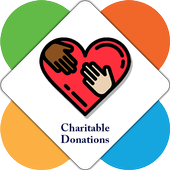
In the United States, in 2007, the Bureau of Labor Statistics found that American households in the lowest fifth in terms of wealth, gave on average a higher percentage of their incomes to charitable organizations than those households in the highest fifth.[1] Charity Navigator writes that, according to Giving USA, Americans gave $298 billion in 2011 (about 2% of GDP).[2] The majority of donations were from individuals (73%), then from bequests (about 12%), foundations (2%) and less than 1% from corporations. The largest sector to receive donations was religious organizations (32%), then education (13%). Giving has increased in 3 out of 4 years since 1971 (with the occasional declines occurring around recession years).[2]
Blackbaud reports that, in the US, online giving in 2012 grew 11% on a year-over-year basis. The percentage of total fundraising that comes from online giving was about 7% in 2012. This was an increase from 6% in 2011 and is nearing the record level of 8% from 2010 when online giving spiked in response to Haitian earthquake relief efforts. Steve MacLaughlin notes in the report that "the Internet has now become the first-response channel of choice for donors during disasters and other emergency events." [3]
Blackbaud's 2015 Charitable Giving report revealed a 9% increase in online giving compared to 2014. In addition, online giving represented 7% of overall fundraising, with 14% of online donations made on mobile devices. Donations made on the international online giving day #GivingTuesday were up 52% from the previous year.




